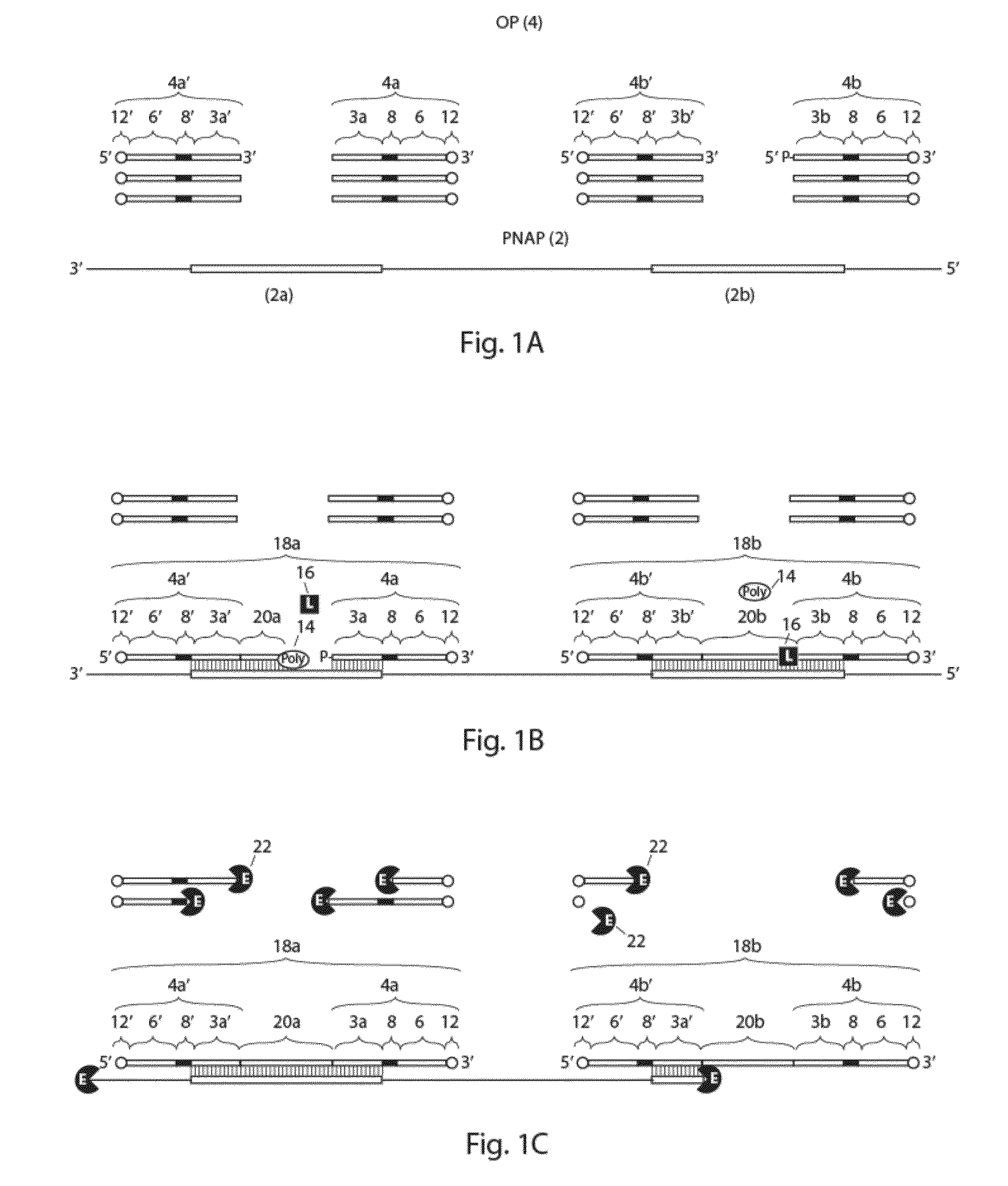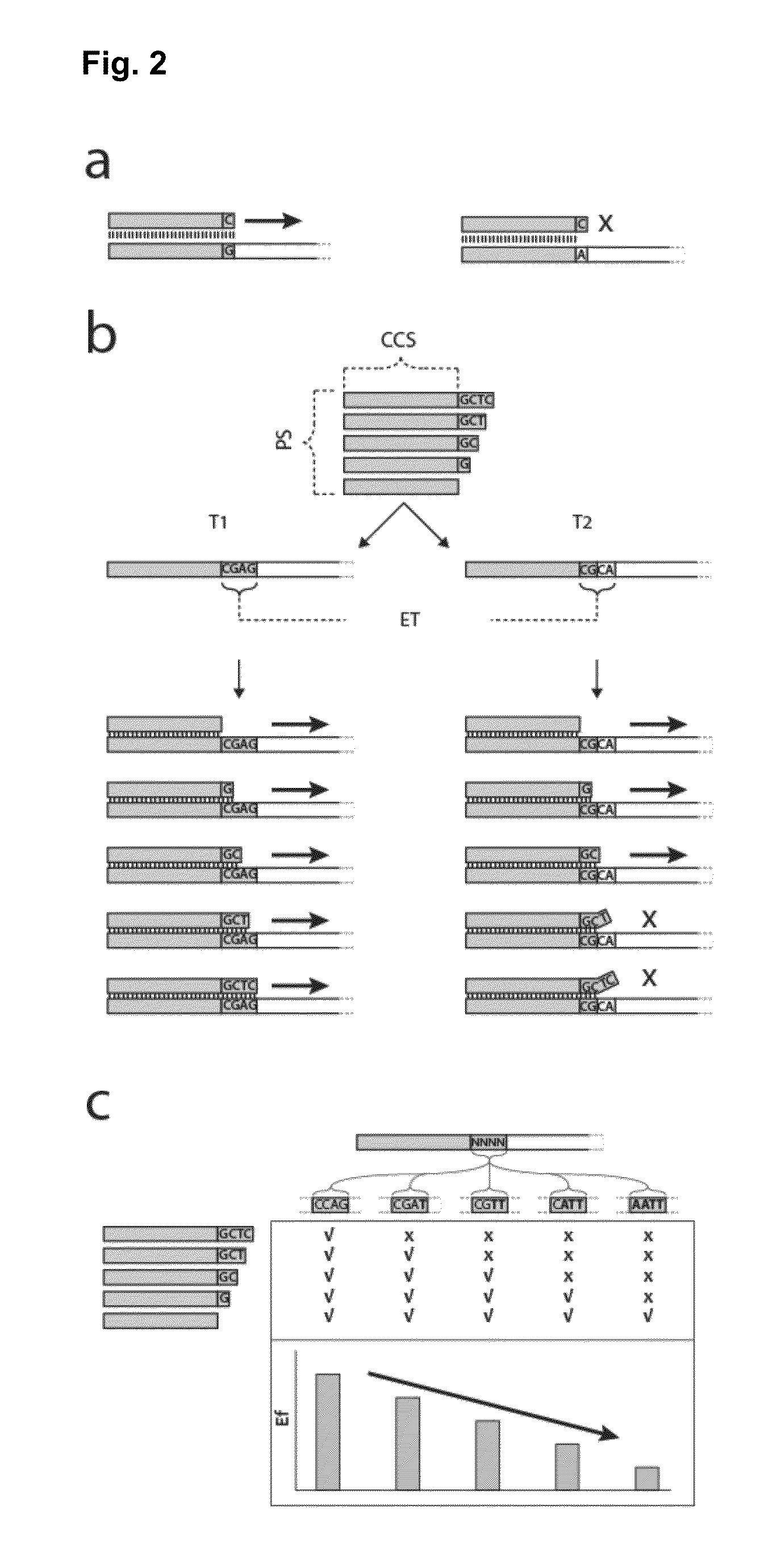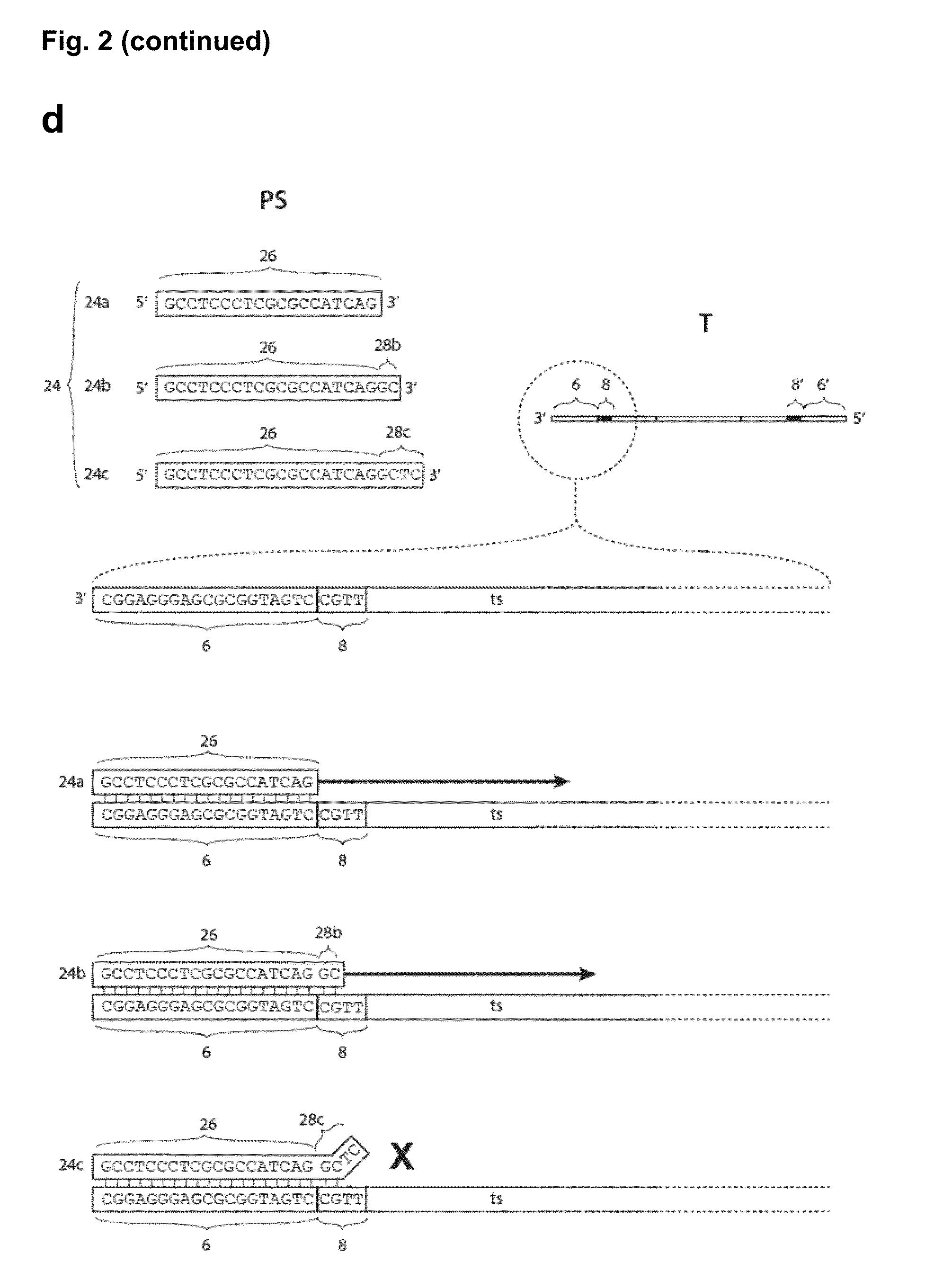Method for the simultaneous amplification of a plurality of different nucleic acid target sequences
- Summary
- Abstract
- Description
- Claims
- Application Information
AI Technical Summary
Benefits of technology
Problems solved by technology
Method used
Image
Examples
example 1
[0111]Oligonucleotide probes are designed to target three genomic locations of the Calpain-3 gene, namely Exon 17, Exon 18&19 and Exon 22, as shown in FIG. 3. For each of the targeted regions, a first oligonucleotide probe (“reverse oligonucleotide”) and a second oligonucleotide probe (“forward oligonucleotide”) are synthesized. The oligonucleotide probes are given in Table 1 below.
[0112]The reverse oligonucleotide probes (CAPN3_Exon17_rev_ET1, CAPN3_Exon18-19_rev_ET5 and CAPN3_Exon22_rev_ET1 for the respective exon) are phosphorylated at the 5′ end and comprise a portion of the target sequence complementary to the primal target sequence, the efficiency tag sequence (underlined), the universal reverse primer annealing sequence and six phosphorothioate analogues of nucleotides at their 3′ end (indicated by an asterisk).
[0113]The forward oligonucleotide probe (CAPN3_Exon17_for_ET1, CAPN3_Exon18-19_for_ET5 and CAPN3_Exon22_for_ET1) comprises six phosphorothioate analogues of nucleotide...
example 2
Results
[0119]As a model we selected the human dystrophin gene, which is the largest (not exon wise but coverage wise) known human gene consisting of 79 exons. Since the first report of multiplex PCR by Chamberlain the dystrophin gene has been used as a model for multiplex PCR also by other investigators. To establish our new technology we designed 78 different targets covering all 79 exons by using ExonPrimer. To allow fast analyis by gel electrophoresis we selected 12 targets which differ in size to be easily discriminated when resolved on a gel (FIG. 5). The sizes of the selected targets are ranging between 153 bp and 725 bp (FIG. 5).
[0120]To prove the ability of etPCT to control PCR efficiency we first generated single templates with efficiency tags and the common priming sequence by PCR for each of the 12 targets (FIG. 5). The gel purified templates were subjected to quantitive PCR to analyze PCR efficiency (FIG. 6a). We first used standard qPCR by using a universe primer pair. ...
PUM
| Property | Measurement | Unit |
|---|---|---|
| Structure | aaaaa | aaaaa |
| Efficiency | aaaaa | aaaaa |
Abstract
Description
Claims
Application Information
 Login to View More
Login to View More - R&D
- Intellectual Property
- Life Sciences
- Materials
- Tech Scout
- Unparalleled Data Quality
- Higher Quality Content
- 60% Fewer Hallucinations
Browse by: Latest US Patents, China's latest patents, Technical Efficacy Thesaurus, Application Domain, Technology Topic, Popular Technical Reports.
© 2025 PatSnap. All rights reserved.Legal|Privacy policy|Modern Slavery Act Transparency Statement|Sitemap|About US| Contact US: help@patsnap.com



